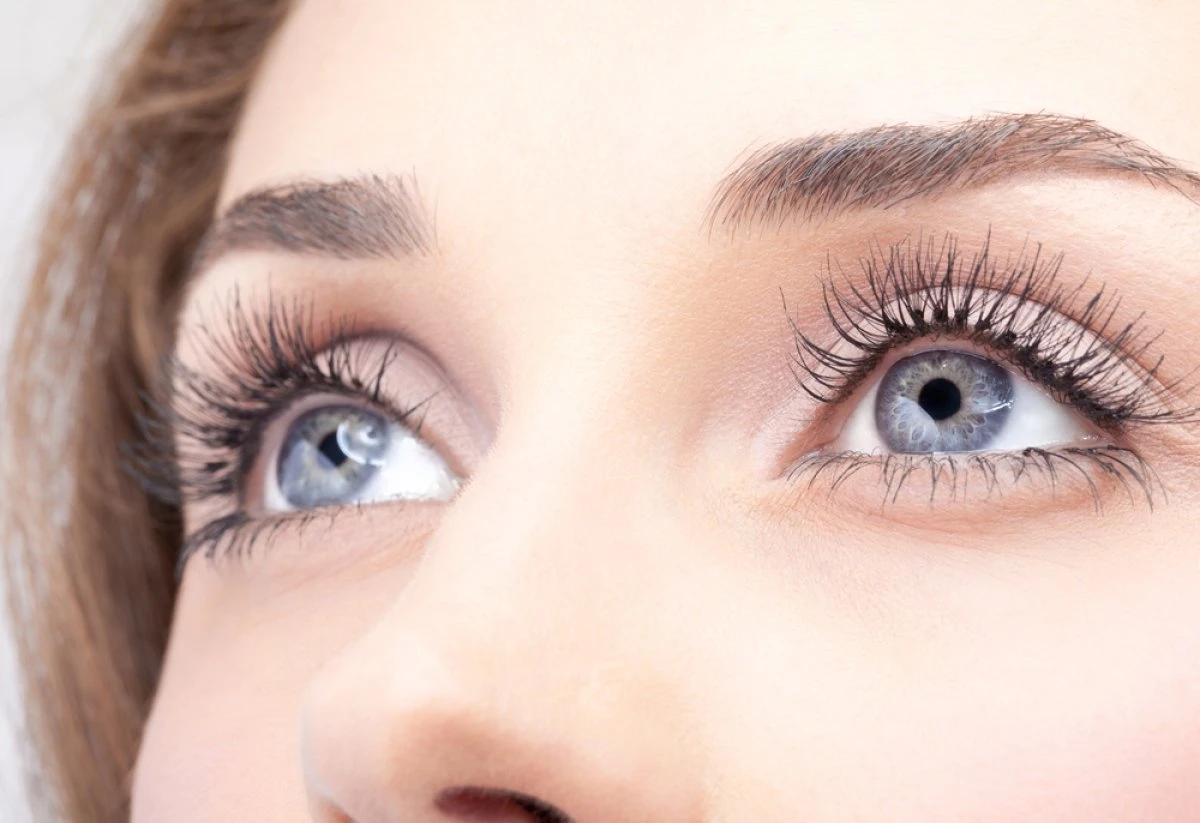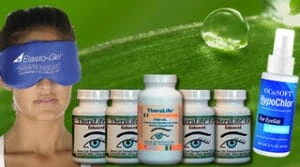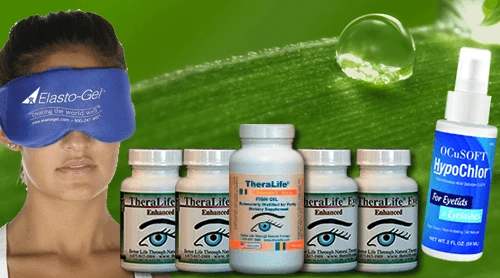Introduction
If you’re experiencing dry eyes, TheraLife.com offers a range of supplements that can provide lasting relief. In 2024, the top recommended supplements include Omega-3 fatty acids, curcumin, and Vitamin D.
TheraLife’s Omega-3 supplements, derived from high-quality fish oil, enhance tear production and reduce inflammation. Curcumin, known for its potent anti-inflammatory properties, alleviates ocular discomfort, while Vitamin D reduces ocular surface inflammation, with optimal results achieved through regular blood level monitoring.
Regular intake of these scientifically-backed supplements can significantly improve dry eye symptoms. For a comprehensive overview of how each TheraLife product specifically contributes to dry eye relief, continue exploring their detailed guides on the website.
Visit TheraLife.com for more information on their products and how they can benefit your eye health.
Key Takeaways
Discover the benefits of TheraLife’s products for dry eyes in 2024:
- Omega-3 fatty acids from fish oil, found in TheraLife’s supplements, enhance tear production and reduce inflammation for better eye comfort.
- Curcumin supplements from TheraLife exhibit potent anti-inflammatory properties, improving ocular comfort.
- TheraLife’s Vitamin D supplements alleviate dry eye symptoms by reducing ocular surface inflammation.
- Hyaluronic acid provides lubrication and enhances tear film stability.
- Lutein and zeaxanthin protect against harmful blue light and reduce the risk of macular degeneration.
By incorporating these targeted supplements, TheraLife offers a comprehensive approach to managing dry eye symptoms and enhancing overall eye health.
Best All Natural Oral Supplement For Dry Eye Relief- TheraLife Eye capsules
Eye drops relief dry eyes from the surface, temporarily.
Oral dry eye treatment like TheraLife Eye treats dry eyes from inside out – addressing the underlying causes of dry eyes. Long lasting sustainable relief all day long.
Add To Cart
Omega-3 Fatty Acids
Omega-3 fatty acids, particularly EPA and DHA, have been shown to greatly improve dry eye symptoms when taken in dosages ranging from 1,000 to 2,000 mg combined per day. Clinical evidence supports that omega-3 supplementation enhances tear production and reduces inflammation, providing significant relief for those suffering from dry eyes.
This is especially beneficial for postmenopausal women, who are more prone to dry eye disease. Fish oil is a superior source of omega-3 fatty acids, offering the highest concentration of EPA and DHA. Flaxseed oil, although a viable alternative, contains alpha-linolenic acid (ALA), which the body must convert to EPA and DHA.
Consistent intake of fish oil, especially high-quality options like TheraLife, can lead to substantial improvements in dry eye symptoms and overall eye comfort, as confirmed by recent clinical studies.
Furthermore, omega-3 fatty acids don’t just alleviate dry eye symptoms; they also support overall eye health. By reducing inflammation and promoting better tear production, omega-3s contribute to improved visual function and may lower the risk of age-related eye conditions.
Incorporating fish oil or flaxseed oil into your daily regimen can be a pivotal step toward maintaining ideal eye health.
Curcumin Supplements
Curcumin, the active compound in turmeric, exhibits potent anti-inflammatory properties that may provide relief for dry eye syndrome. Research indicates that curcumin supplements can enhance tear production and reduce ocular discomfort in individuals suffering from dry eyes. These findings are supported by several studies suggesting that curcumin’s anti-inflammatory effects could mitigate the inflammation contributing to dry eye symptoms.
Additionally, it’s vital to take into account that dietary supplements like fish oil may also support tear production and eye health, potentially synergizing with curcumin for better outcomes.
The recommended dosage for curcumin supplements generally ranges from 500 to 2,000 mg per day. However, individual requirements can vary, and it’s necessary to tailor the dosage based on your specific health needs and medical advice. Clinicians often recommend starting with a lower dose and gradually increasing it to observe any therapeutic effects and monitor for potential side effects.
Although the effectiveness of curcumin in managing dry eye syndrome is promising, it remains under investigation. Ongoing research is essential to determine the best formulations and dosages for maximum benefit.
As with any supplement, consult with a healthcare professional before initiating curcumin, especially if you’re on medications or have underlying health conditions. This guarantees the safe and effective integration of curcumin into your dry eye management regimen.
Vitamin D
Vitamin D
Vitamin D’s anti-inflammatory properties could greatly alleviate dry eye symptoms by reducing ocular surface inflammation.
Evidence shows that individuals with dry eye syndrome often have lower Vitamin D levels, suggesting supplementation may improve tear production and overall eye health.
Environmental factors, such as dry air and prolonged screen time, can exacerbate symptoms, making Vitamin D supplementation even more critical.
For ideal results, consider the recommended daily allowance of 600 to 800 IU, but higher doses may be necessary based on regular blood test monitoring.
Anti-Inflammatory Eye Benefits
Although often overlooked, maintaining adequate levels of Vitamin D is essential for eye health due to its potent anti-inflammatory properties.
Vitamin D plays a significant role in mitigating inflammation on the ocular surface and within tear glands, which is critical for individuals suffering from dry eye syndrome. In addition, regular exercise and staying hydrated can complement Vitamin D’s benefits by enhancing circulation and overall eye health.
Research indicates that sufficient Vitamin D levels are correlated with enhanced tear production and overall ocular health, making it a key component in managing dry eye conditions.
A deficiency in Vitamin D has been directly associated with a heightened risk of developing dry eye disease. This underscores the importance of monitoring and maintaining ideal Vitamin D levels. For adults, the recommended daily allowance typically ranges between 600-800 IU, but this can vary based on individual health needs.
Supplementing with Vitamin D can offer significant benefits, particularly for those battling chronic inflammation linked to dry eye conditions.
By incorporating Vitamin D supplements into your routine, you may experience a reduction in inflammation and an improvement in tear production, thereby alleviating some of the uncomfortable symptoms associated with dry eye.
Ensuring adequate Vitamin D intake is a clinically supported strategy to bolster eye health and manage inflammation effectively.
Dry Eye Symptom Relief
Maintaining ideal Vitamin D levels isn’t just about general health; it’s particularly impactful for those experiencing dry eye symptoms. Vitamin D’s anti-inflammatory properties are fundamental in reducing inflammation on the ocular surface, which is a common underlying factor in dry eyes.
Research has shown a significant correlation between low Vitamin D levels and the severity of dry eye disease. This suggests that addressing a Vitamin D deficiency could be key in alleviating symptoms. Additionally, chronic dry eyes can exacerbate complications such as meibomian gland dysfunction and blepharitis, making it even more important to manage inflammation effectively.
By incorporating Vitamin D health supplements, you may see improvements in tear production and overall tear film stability. Enhanced tear production is essential for maintaining eye comfort and reducing the gritty, uncomfortable sensation often associated with dry eyes.
Clinical studies have highlighted that individuals supplementing with Vitamin D often report a noticeable relief from dry eyes, underlining its effectiveness in symptom management.
However, it’s important to consult with a healthcare provider before starting any supplementation regimen. This guarantees that the dosage is tailored to your specific needs and health status, optimizing the benefits while minimizing potential risks.
To summarize, Vitamin D is a promising option to relieve dry eyes by addressing both inflammation and tear production deficiencies.
Optimal Dosage Recommendations
When determining the ideal dosage of Vitamin D for addressing dry eye symptoms, it is vital to take into account current scientific evidence and clinical guidelines. Research suggests that a suitable dosage typically falls between 600 to 800 IU per day for adults. However, some studies advocate for higher doses, particularly for those with significant Vitamin D deficiencies or persistent dry eye symptoms.
Vitamin D’s anti-inflammatory properties can markedly alleviate dry eye symptoms, especially in individuals with low serum levels. Those with dry eye disease often have considerably lower Vitamin D levels compared to those without, stressing the need for adequate supplementation.
Regular blood tests are important for monitoring your Vitamin D levels to tailor your supplementation needs and avoid potential toxicity. Always consult a healthcare provider before starting any Vitamin D regimen, particularly if you have underlying health conditions or are on other medications.
| Dosage (IU per day) | Benefits |
|---|---|
| 600-800 | Standard dosage |
| 1,000-2,000 | Enhanced relief |
| 4,000 | Maximum safe limit |
| Regular Monitoring | Prevents toxicity |
| Consultation | Personalized advice |
Hyaluronic Acid
Hyaluronic Acid
Hyaluronic acid stands out for its hydration and lubrication properties, making it a potent option for managing dry eye symptoms.
Evidence shows that it enhances tear film stability and provides long-lasting relief, outperforming traditional artificial tears.
Additionally, its anti-inflammatory benefits contribute to improved overall eye comfort and health, particularly in moderate to severe cases.
For instance, TheraLife® Eye capsules aim to revive and restore natural tear production, leveraging similar principles to hyaluronic acid for sustainable relief.
Hydration and Lubrication
Your body’s natural ability to retain moisture plays an essential role in maintaining eye health, and hyaluronic acid is a key player in this process. Hyaluronic acid, a naturally occurring substance in the body, excels in moisture retention, making it invaluable for dry eye relief. Eye drops containing hyaluronic acid have been clinically proven to enhance tear film stability, providing longer-lasting hydration and lubrication.
Hyaluronic acid also offers additional benefits by reducing inflammation and improving overall ocular comfort, addressing some of the underlying causes of dry eye symptoms.
One of the remarkable features of hyaluronic acid is its capacity to absorb and hold water—up to 1,000 times its weight. This unique property makes it highly effective in alleviating dryness and discomfort, greatly improving eye health.
Studies indicate that products with hyaluronic acid offer relief for both mild and moderate dry eye symptoms, and they’re generally well-tolerated by users.
Incorporating hyaluronic acid into your daily eye care regimen can greatly support overall eye health. By improving moisture retention, it helps reduce irritation caused by environmental factors.
Therefore, hyaluronic acid isn’t just another ingredient; it’s a clinically backed solution that provides essential hydration and lubrication, ensuring your eyes stay comfortable and healthy.
Anti-Inflammatory Benefits
Embracing the anti-inflammatory benefits of hyaluronic acid can greatly enhance eye health, particularly for those grappling with dry eye syndrome.
Hyaluronic acid stands out due to its remarkable moisture-retention capability, holding up to 1,000 times its weight in water. This property is vital for alleviating dry eye symptoms by enhancing tear viscosity and stability. Additionally, gentle eye massage can complement the effects of hyaluronic acid by encouraging oil secretion from meibomian glands, further improving lubrication.
The anti-inflammatory properties of hyaluronic acid play a key role in reducing ocular surface inflammation, a prevalent issue in dry eye syndrome. Studies have shown that the topical application of hyaluronic acid eye drops considerably improves overall comfort and diminishes the severity of dry eye symptoms.
By incorporating this compound into ophthalmic formulations, you can achieve both hydration and protection for the corneal surface, promoting healing and reducing irritation.
Moreover, hyaluronic acid has been linked to improved tear film quality, which is essential for providing lasting relief from dryness and discomfort. Regular use can improve comfort by maintaining a stable tear film and mitigating ocular surface inflammation.
For individuals suffering from dry eye syndrome, hyaluronic acid offers a clinically validated solution that addresses both the symptoms and underlying inflammation, ensuring a more effective and lasting relief.
Vitamin A
For maintaining the clarity of the cornea and guaranteeing proper light perception, Vitamin A is essential. This nutrient plays a pivotal role in tear production and overall eye health. A deficiency in Vitamin A can lead to dry eye symptoms, as it’s critical for maintaining healthy ocular surfaces.
Clinical studies have demonstrated that adequate intake of Vitamin A can greatly reduce the risk of severe dry eye conditions and enhance tear production. Additionally, Vitamin A supports normal function of the meibomian oil glands, which is fundamental for eye lubrication.
To mitigate dry eye symptoms, it’s essential to verify you’re meeting the recommended dietary allowance (RDA) for Vitamin A, which is 900 micrograms for men and 700 micrograms for women. Foods rich in Vitamin A, such as carrots, sweet potatoes, and spinach, should be included in your diet.
However, when dietary intake isn’t sufficient, health products containing Vitamin A can serve as effective supplements. It’s important to consult a healthcare provider for appropriate dosing and to avoid toxicity, especially in high doses.
Vitamin A supplements come in various formulations, and professional guidance can help you choose the right product to support your overall eye health and alleviate dry eye symptoms efficiently.
Lutein and Zeaxanthin
Lutein and zeaxanthin are essential carotenoids that considerably contribute to eye health by filtering harmful blue light and supporting the macula, the central part of the retina.
These potent antioxidants are pivotal in reducing the risk of age-related macular degeneration (AMD) and cataracts, thereby promoting long-term vision health. Additionally, they play a role in treating moderate dry eye disease, as indicated by the TheraLife formulations, which have shown significant improvements in both subjective and objective measures of dry eye symptoms.
Clinically, lutein and zeaxanthin are found in high concentrations in green leafy vegetables like spinach and kale, as well as in egg yolks and various fruits. For peak eye health, the recommended daily intake of lutein is around 6-10 mg, while zeaxanthin is typically suggested at 1-2 mg.
Research underscores the efficacy of supplements containing lutein and zeaxanthin, such as the AREDS 2 formulation, which has demonstrated a 25% reduction in the progression of AMD in clinical studies.
These supplements provide a reliable means to achieve the necessary intake levels, especially when dietary sources are insufficient.
Incorporating lutein and zeaxanthin into your regimen could be a significant step towards mitigating the risks associated with macular degeneration and preserving your vision.
Their role as antioxidants in filtering blue light and supporting macula health makes them indispensable for anyone concerned about their eye health.
Bilberry Extract
Bilberry extract, abundant in antioxidants like anthocyanins, prominently enhances blood circulation in the eyes and supports overall ocular health. Clinical studies have demonstrated that a daily dosage of 160 to 480 mg of bilberry extract can greatly alleviate dry eye symptoms. The potent antioxidants in bilberry extract are vital in mitigating inflammation, a common cause of dry eyes, thereby promoting improved tear production.
Additionally, bilberry extract has shown promise in reducing visual fatigue, particularly for individuals who spend extensive periods in front of screens or engaged in tasks requiring intensive visual focus. By enhancing blood flow within the ocular microvasculature, bilberry extract helps maintain ideal eye health and supports the eye’s natural lubrication mechanisms.
For those seeking a natural remedy, bilberry extract is accessible in various forms, including capsules, tablets, and teas. The efficacy of bilberry in supporting eye health and mitigating dry eye symptoms makes it a valuable addition to your eye care regimen.
Its ability to address both inflammation and tear production provides thorough support for individuals experiencing dry eye discomfort, making it a remarkable recommendation in the management of this condition.
Black Currant Oil
Black currant oil, an abundant source of gamma-linolenic acid (GLA), offers significant benefits for individuals struggling with dry eye symptoms. GLA, an omega-6 fatty acid, has been shown to improve dry eye symptoms by enhancing tear production and reducing inflammation.
Studies indicate that supplementation with black currant oil leads to marked improvements in both tear production and overall eye comfort, particularly for those with chronic dry eye conditions.
In addition to improving tear production, black currant oil’s antioxidant properties play a vital role in protecting the eyes from oxidative stress and damage. This dual action makes it a compelling option for eye health.
The typical dosage ranges from 500 to 1,000 mg per day; however, it’s important to consult with a healthcare provider to determine the most appropriate dose for your specific needs.
Black currant oil can serve as a valuable alternative or complement to traditional omega-3 fatty acid sources, offering similar benefits for eye health and moisture retention.
This makes it a versatile option in your fight against dry eye symptoms, providing both anti-inflammatory and antioxidant advantages to maintain ideal eye health.
Vitamin C
Vitamin C is a potent antioxidant that can help combat oxidative stress, a significant factor in dry eye symptoms.
By boosting tear production and supporting immune health, adequate Vitamin C intake may enhance overall eye surface health.
Incorporating Vitamin C-rich foods or supplements into your diet could be an essential step in managing dry eyes effectively.
Boosts Tear Production
Maintaining ideal eye health requires a multifaceted approach, and one essential element is ensuring sufficient intake of Vitamin C. This potent antioxidant plays a critical role in boosting tear production and maintaining the integrity of the tear film, which is fundamental for alleviating dry eye symptoms.
Vitamin C helps stabilize the tear film and supports the overall health of the ocular surface, crucial for preventing the discomfort associated with dry eyes.
Studies have shown that adequate Vitamin C intake can considerably enhance eye moisture, leading to improved tear production. This is essential for individuals struggling with dry eye symptoms, as a robust tear film is necessary to keep the eyes lubricated and reduce irritation.
Consuming foods rich in Vitamin C, such as oranges, strawberries, and bell peppers, or opting for supplements, can help you meet the recommended daily intake of 65 to 90 mg for adults.
Combats Oxidative Stress
While boosting tear production is essential for managing dry eyes, combating oxidative stress is equally important for maintaining ocular health. Vitamin C, a powerful antioxidant, plays a significant role in this regard. Oxidative stress can damage the tear-producing glands, exacerbating dry eye symptoms. By neutralizing free radicals, Vitamin C helps protect these glands, thereby reducing the impact of oxidative damage on your eye health.
Research indicates that Vitamin C intake supports the overall health of ocular tissues. Adequate levels of this nutrient may mitigate the risk of age-related eye disorders, contributing to better long-term eye health.
Additionally, studies have shown that Vitamin C can enhance the efficacy of other antioxidants. This synergistic effect offers an extra layer of protection for your eyes, reinforcing tear film stability and promoting comfort.
Incorporating Vitamin C into your diet through citrus fruits, bell peppers, and strawberries can help maintain ideal levels. However, supplements are a reliable alternative to guarantee you’re getting enough Vitamin C to combat oxidative stress effectively.
Supplementing with Vitamin C has been linked to improved tear film stability, which is essential for alleviating dry eye symptoms and enhancing overall eye comfort.
Supports Immune Health**
A robust immune system is essential for overall health and well-being, and Vitamin C plays a pivotal role in this regard. This vitamin enhances the function of immune cells and boosts antibody production, making it a critical component in maintaining immune health.
As a potent antioxidant, Vitamin C also protects eye health by neutralizing harmful free radicals, which contribute to oxidative stress and inflammation.
Studies have shown that adequate Vitamin C intake may reduce the risk of developing cataracts and age-related macular degeneration, both of which can greatly impact vision. By mitigating oxidative damage, Vitamin C helps maintain the integrity of ocular tissues, thereby supporting eye health.
The recommended dietary allowance (RDA) for Vitamin C is 90 mg for adult men and 75 mg for adult women, with higher amounts suggested for smokers and individuals under stress.
Incorporating dietary sources rich in Vitamin C, such as citrus fruits, strawberries, bell peppers, and broccoli, can help you maintain adequate levels of this essential nutrient. Ensuring ideal Vitamin C intake not only supports overall immune health but also promotes eye function, making it a valuable addition to your daily regimen for lasting relief from dry eyes.
Vitamin E
Vitamin E’s pivotal role as an essential fat-soluble antioxidant makes it a valuable component in the fight against dry eye symptoms. By protecting eye tissues from oxidative stress, vitamin E can contribute greatly to eye health.
Research suggests that supplementing with vitamin E may improve tear quality and reduce inflammation, key factors for individuals suffering from dry eyes. This vitamin maintains the health of cell membranes within the eyes, thereby potentially preventing age-related damage.
You can obtain vitamin E from dietary sources like nuts, seeds, and leafy greens, or through specially formulated supplements. The recommended daily allowance (RDA) for vitamin E is 15 mg (22.4 IU) for adults, but higher doses should be discussed with a healthcare provider due to possible interactions with other medications.
Given its role in reducing oxidative stress and inflammation, incorporating vitamin E into your regimen could provide considerable benefits for your tear quality and overall eye health.
To maximize the efficacy, always opt for high-quality supplements and consult your healthcare provider to tailor the dosage to your specific needs. This approach guarantees you’re safely leveraging vitamin E’s powerful properties to combat dry eye symptoms effectively.
Frequently Asked Questions
What Is the Best Supplement for Extremely Dry Eyes?
For extremely dry eyes, consider TheraLife’s specialized products designed to address this condition effectively.
TheraLife’s Omega-3 fatty acids from fish oil and flaxseed oil supplements have proven benefits, with clinical studies recommending a combined daily dose of 1,000 to 2,000 mg.
Additionally, TheraLife offers vitamin A supplements, vital for eye health, and evening primrose oil known for its anti-inflammatory properties.
Effective hydration strategies, as advocated by TheraLife, are essential for maintaining ideal eye moisture and overall health.
Explore TheraLife’s range of products to find comprehensive solutions for dry eyes, ensuring enhanced comfort and eye health.
What Is the Number One Eye Supplement?
Imagine your eyes as parched deserts craving hydration. TheraLife.com’s products offer transformative benefits for those suffering from dry eyes.
Their flagship supplement, enriched with omega-3 fatty acids such as EPA and DHA, significantly enhances eye health by boosting tear production and providing essential hydration.
In addition to these supplements, TheraLife.com offers a range of natural remedies and lifestyle advice that have been clinically proven to alleviate dryness effectively.
What Is the Best Treatment for Severe Dry Eyes?
For severe dry eyes, utilizing TheraLife’s products can provide significant relief and comprehensive management.
TheraLife focuses on natural remedies and lifestyle changes, ensuring proper hydration and managing environmental factors like humidity. Their product line supports eye hygiene by promoting the regular washing of eyelids and includes supplements rich in omega-3 fatty acids to reduce inflammation.
TheraLife’s clinically proven products, such as TheraLife Eye Enhanced, work synergistically with prescription treatments like Restasis or Xiidra.
Regular consultation with your eye care professional, combined with TheraLife’s targeted solutions, ensures all-encompassing management and relief for severe dry eyes.
What Is the Most Important Supplement for the Eyes?
TheraLife’s products are designed to offer significant benefits for eye health, particularly through the inclusion of Omega-3 fatty acids.
These essential nutrients enhance hydration by improving tear production and reducing inflammation.
TheraLife ensures that EPA and DHA, specific Omega-3s, are included in their formulations to maximize their effectiveness.
Supported by clinical studies, TheraLife’s products are a key component of any comprehensive eye care regimen, offering substantial nutritional benefits and promoting overall eye health.
Add To Cart
Conclusion
Theralife.com offers a range of products specifically designed to benefit customers suffering from dry eyes. Their supplements, which include Omega-3 fatty acids, curcumin, Vitamin D, hyaluronic acid, Vitamin A, bilberry extract, black currant oil, Vitamin C, and Vitamin E, are backed by current clinical research. These products not only alleviate dryness but also support overall eye function and enhance ocular health. By incorporating Theralife.com’s scientifically-backed options into your routine, you can take control of your eye health now and experience lasting relief. Explore their offerings and discover how they can improve your eye health today.
References
- 1.
- The definition and classification of dry eye disease: report of the Definition and Classification Subcommittee of the International Dry Eye WorkShop (2007). Ocul Surf. 2007 Apr;5(2):75-92. [PubMed]
- 2.
- Huang R, Su C, Fang L, Lu J, Chen J, Ding Y. Dry eye syndrome: comprehensive etiologies and recent clinical trials. Int Ophthalmol. 2022 Oct;42(10):3253-3272. [PMC free article] [PubMed]
- 3.
- Craig JP, Nichols KK, Akpek EK, Caffery B, Dua HS, Joo CK, Liu Z, Nelson JD, Nichols JJ, Tsubota K, Stapleton F. TFOS DEWS II Definition and Classification Report. Ocul Surf. 2017 Jul;15(3):276-283. [PubMed]
- 4.
- King-Smith PE, Fink BA, Hill RM, Koelling KW, Tiffany JM. The thickness of the tear film. Curr Eye Res. 2004 Oct-Nov;29(4-5):357-68. [PubMed]
- 5.
- King-Smith PE, Fink BA, Fogt N, Nichols KK, Hill RM, Wilson GS. The thickness of the human precorneal tear film: evidence from reflection spectra. Invest Ophthalmol Vis Sci. 2000 Oct;41(11):3348-59. [PubMed]
- 6.
- Chen Q, Wang J, Tao A, Shen M, Jiao S, Lu F. Ultrahigh-resolution measurement by optical coherence tomography of dynamic tear film changes on contact lenses. Invest Ophthalmol Vis Sci. 2010 Apr;51(4):1988-93. [PMC free article] [PubMed]
- 7.
- Willcox MDP, Argüeso P, Georgiev GA, Holopainen JM, Laurie GW, Millar TJ, Papas EB, Rolland JP, Schmidt TA, Stahl U, Suarez T, Subbaraman LN, Uçakhan OÖ, Jones L. TFOS DEWS II Tear Film Report. Ocul Surf. 2017 Jul;15(3):366-403. [PMC free article] [PubMed]
- 8.
- Peng CC, Cerretani C, Braun RJ, Radke CJ. Evaporation-driven instability of the precorneal tear film. Adv Colloid Interface Sci. 2014 Apr;206:250-64. [PubMed]
- 9.
- Zhou L, Beuerman RW. Tear analysis in ocular surface diseases. Prog Retin Eye Res. 2012 Nov;31(6):527-50. [PubMed]
- 10.
- Mantelli F, Mauris J, Argüeso P. The ocular surface epithelial barrier and other mechanisms of mucosal protection: from allergy to infectious diseases. Curr Opin Allergy Clin Immunol. 2013 Oct;13(5):563-8. [PMC free article] [PubMed]
- 11.
- O’Neil EC, Henderson M, Massaro-Giordano M, Bunya VY. Advances in dry eye disease treatment. Curr Opin Ophthalmol. 2019 May;30(3):166-178. [PMC free article] [PubMed]
- 12.
- Fjaervoll K, Fjaervoll H, Magno M, Nøland ST, Dartt DA, Vehof J, Utheim TP. Review on the possible pathophysiological mechanisms underlying visual display terminal-associated dry eye disease. Acta Ophthalmol. 2022 Dec;100(8):861-877. [PMC free article] [PubMed]
- 13.
- Craig JP, Nelson JD, Azar DT, Belmonte C, Bron AJ, Chauhan SK, de Paiva CS, Gomes JAP, Hammitt KM, Jones L, Nichols JJ, Nichols KK, Novack GD, Stapleton FJ, Willcox MDP, Wolffsohn JS, Sullivan DA. TFOS DEWS II Report Executive Summary. Ocul Surf. 2017 Oct;15(4):802-812. [PubMed]
- 14.
- Qian L, Wei W. Identified risk factors for dry eye syndrome: A systematic review and meta-analysis. PLoS One. 2022;17(8):e0271267. [PMC free article] [PubMed]
- 15.
- I Y Hasan ZA. Dry eye syndrome risk factors: A systemic review. Saudi J Ophthalmol. 2021 Apr-Jun;35(2):131-139. [PMC free article] [PubMed]
- 16.
- Paulsen AJ, Cruickshanks KJ, Fischer ME, Huang GH, Klein BE, Klein R, Dalton DS. Dry eye in the beaver dam offspring study: prevalence, risk factors, and health-related quality of life. Am J Ophthalmol. 2014 Apr;157(4):799-806. [PMC free article] [PubMed]
- 17.
- Chang CJ, Somohano K, Zemsky C, Uhlemann AC, Liebmann J, Cioffi GA, Al-Aswad LA, Lynch SV, Winn BJ. Topical Glaucoma Therapy Is Associated With Alterations of the Ocular Surface Microbiome. Invest Ophthalmol Vis Sci. 2022 Aug 02;63(9):32. [PMC free article] [PubMed]
- 18.
- Andole S, Senthil S. Ocular Surface Disease and Anti-Glaucoma Medications: Various features, Diagnosis, and Management Guidelines. Semin Ophthalmol. 2023 Feb;38(2):158-166. [PubMed]
- 19.
- Sobolewska B, Schaller M, Zierhut M. Rosacea and Dry Eye Disease. Ocul Immunol Inflamm. 2022 Apr 03;30(3):570-579. [PubMed]
- 20.
- Bilgic AA, Kocabeyoglu S, Dikmetas O, Tan C, Karakaya J, Irkec M. Influence of video display terminal use and meibomian gland dysfunction on the ocular surface and tear neuromediators. Int Ophthalmol. 2023 May;43(5):1537-1544. [PubMed]





